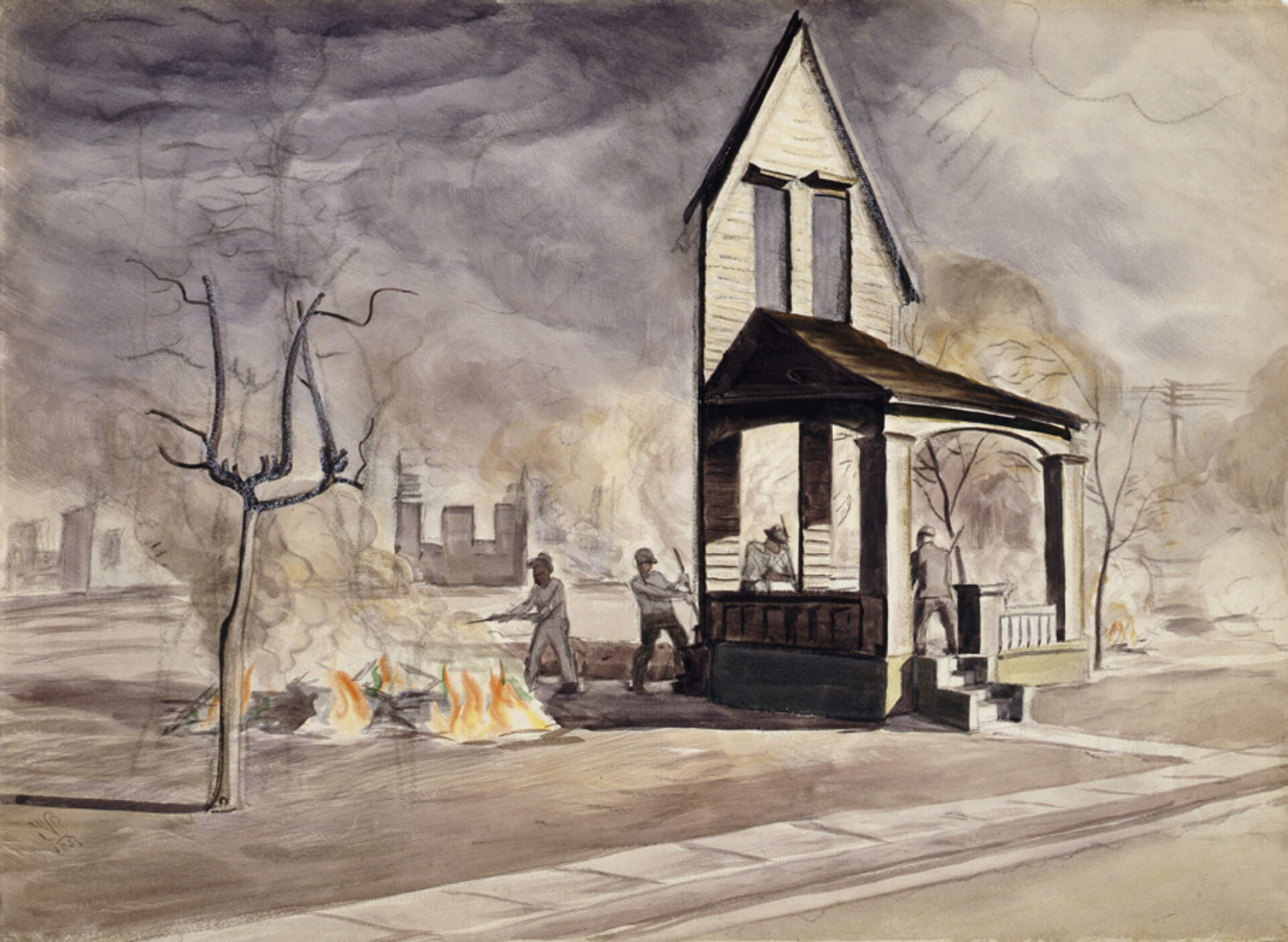
Charles E. Burchfield (1893-1967), The Builders (House Wreckers in June), 1931; watercolor and charcoal on paper, 22 x 30 1/8 in. (55.9 x 76.5 cm); Courtesy of DC Moore Gallery, New York
Blistering Vision
Charles E. Burchfield’s Sublime American Landscapes
Past
Jul 8, 2016 - Oct 23, 2016
Charles E. Burchfield (1893–1967) reverently captured the awe-filled grandeur of nature, along with the fierce, deceptive beauty of the industries that threatened it. Blistering Vision brings together sketches and paintings of these sublime landscapes, revealing Burchfield’s work as a bridge to the modern environmental movement. Join us at The Center, the museum of record for Burchfield and home to the largest public collection of his paintings and archives, and experience this groundbreaking exhibition.
Blistering Vision: Charles E. Burchfield’s Sublime American Landscapes, will bring together important paintings and supporting sketches of the sublime landscapes that Charles E. Burchfield (1893-1967) chronicled throughout his career. The exhibition will propose that his paintings of nature, and the industries that threatened it, form a bridge between the aesthetics of nature in nineteenth century American painting and the emergence of the environmental movement and environmental aesthetics in the second half of the twentieth century.
In his painting Storm Over Irondale, from 1920, threatening clouds hover over a bleak industrial landscape tucked away in an otherwise empty valley thirty miles south of his hometown of Salem, Ohio. Raw shattered trees are all that remains of what would have once been a verdant wilderness. In a sketch for this sublime painting, Burchfield wrote the following;
Life at Irondale is hideously raw, crude & primitive – it is splendid in its very brutality - powerful and awe- inspiring.
The nineteenth century was a time of change in towns and cities all over America. Growing industries brought new jobs to Salem and began to overtake what was a pastoral region of rolling hills and gently farmed fields. Then, the twentieth century brought more radical changes to the landscape, and the young Burchfield, growing up in Salem, was a keen witness. He experienced this landscape during a tumultuous time, when industries were going from boom to bust and the will to protect nature was not yet strong enough in the culture at large.
As a young man he read the work of naturalists John Burroughs (1837-1921) and Henry David Thoreau (1817-1862). His appreciation for nature was so great that in 1914 he seriously considered becoming a nature writer himself and ventured long passages in his journal to test these waters. Later he read the work of Romantic writers such as Henry Wordsworth Longfellow (1807-1882) and Victor Hugo (1802-1885), transcribing passages from Hugo’s Ninety-Three (1874) into his journal. While his commitment to nature never wavered, it turned out that his primary expression was through his paintings, with his words retained in the privacy of his journals.
A work from late in his life, Summer Solstice (In Memory of the American Chestnut Tree), 1961-66, is eulogy for a lost giant that exemplifies his painterly advocacy for the environment. The American chestnut was devastated by a fungus accidently introduced into North America in the first decade of the twentieth century. With this sublime subject, as with so many others in his oeuvre, Burchfield was driven to inspire reverence and awe. A revealing journal entry from 1962 explained part of his “expansion process” for this painting;
I added (with clips) 4 inches of white board, and extended the tree upward. The effect was dramatic. Only 4 inches but it seemed as if the heavens were brought into it, and as if, at last I might be able to paint a picture with “Presence of God” in it. Is it too much to hope for?
In 1966, at the end of Burchfield’s life, Ronald W. Hepburn published his essay Contemporary Aesthetics and the Neglect of Natural Beauty. Hepburn, described as the “father of environmental aesthetics,” wrote the following:
Relevant facts, then, are these: that for all the cult of the open air, the caravans, camps and excursions in the family car — serious aesthetic concern with nature is today rather a rare phenomenon.
The Exhibition Blistering Vision: Charles E. Burchfield’s Sublime American Landscapes will show that Burchfield’s aesthetic concern with nature was indeed serious, that his paintings of the American landscape remain an important part of our understanding of the environmental challenges presented by industry in the first half of the twentieth century, and that his concerns for the environment were prescient statements of concern, expressed from within the dialect of the tradition of the sublime, extending its reach into the new context of environmental aesthetics.